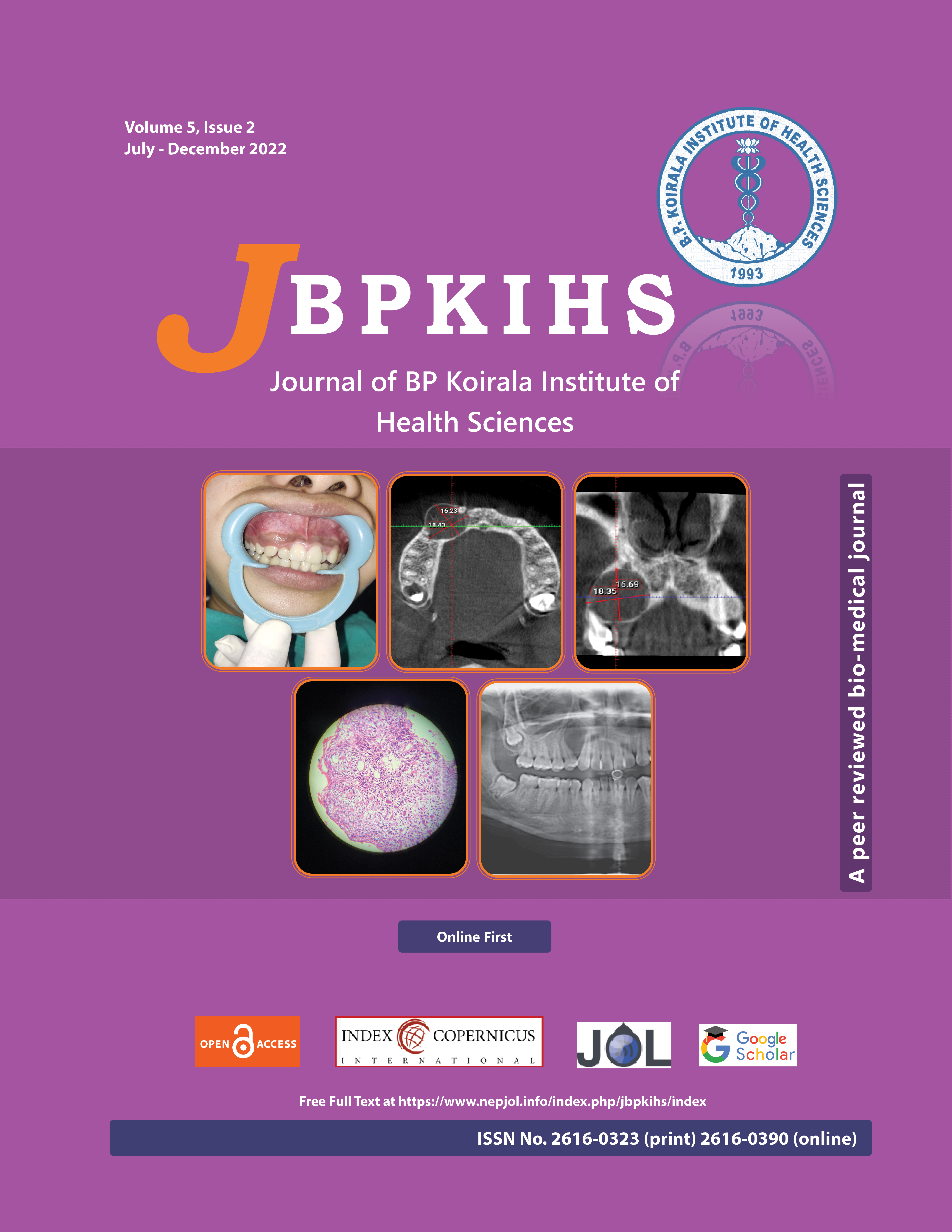Prevalence of Refractive Error among Children of Koshi Rural Municipality of Sunsari District: Door-to-Door Screening
DOI:
https://doi.org/10.3126/jbpkihs.v5i2.49189Keywords:
Children, Prevalence, Refractive errorAbstract
Background: Uncorrected refractive error is the commonest cause of preventable visual impairment and disability among children. This study aimed to find out the prevalence of refractive error among children in the Koshi Rural Municipality of Sunsari district.
Methods: This cross-sectional study conducted from 1 November to 31 December 2020 involved children between the ages of 4 - 18 years from Koshi Rural Municipality. The variables recorded included gender, age, religion, school type, visual acuity, and types of refractive error. Ethical approval was taken from the rural municipality and institutional review committee of Biratnagar Eye Hospital.
Results: A total of 7830 children were screened in the door-to-door campaign. The majority (n = 5508, 72%) were Hindu and 2232 (28%) were Muslims. Only 6575 (84%) children were enrolled in school. Among them 3130 (40%) were going to government schools, 2105(26.9%) were going to private schools and 1340 (17.1%) children were going to a Madrassa (Muslim school) for education. The prevalence of refractive errors among children of Koshi Rural Municipality was 131 (1.7%) (95% CI: 1.4 - 2.0). Hypermetropia was seen in 69 (53%) children, followed by Myopia 60 (46%).
Conclusion: The prevalence of uncorrected refractive error among children of Koshi Rural Municipality was low. However, the prevalence of refractive error was high among Muslim children.
Downloads
Downloads
Published
How to Cite
Issue
Section
License
Copyright (c) 2022 Journal of BP Koirala Institute of Health Sciences

This work is licensed under a Creative Commons Attribution-NonCommercial-NoDerivatives 4.0 International License.
This license enables reusers to copy and distribute the material in any medium or format in unadapted form only, for noncommercial purposes only, and only so long as attribution is given to the creator.




